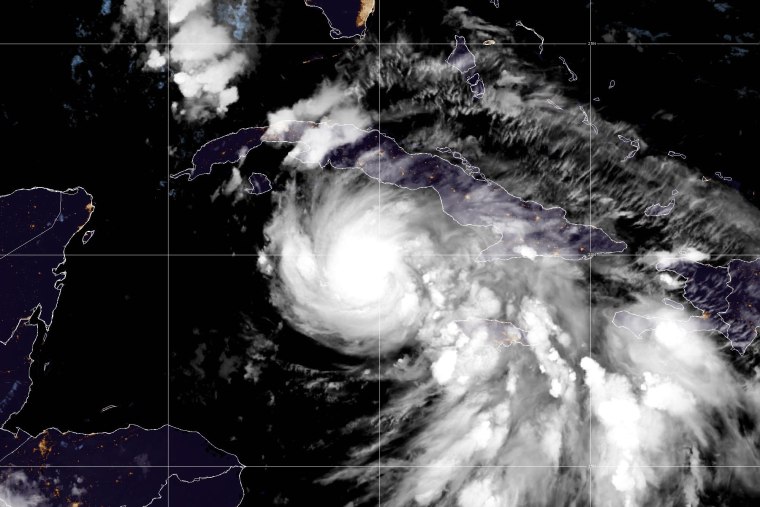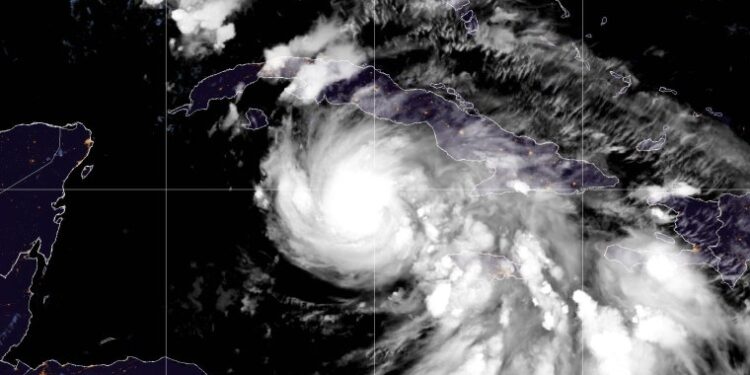Rafael made landfall as a Category 3 hurricane Wednesday afternoon in western Cuba before weakening, the National Hurricane Center said.
In an 8 p.m. update, the center said Rafael was moving over the southeastern Gulf of Mexico, about 60 miles west of Havana, and moving northwest at 13 mph.
It had maximum sustained wind speeds of 105 mph, making it a Category 2 hurricane.
Rafael made landfall in the in the Cuban province of Artemisa, just east of Playa Majana, as a major hurricane. As the storm lashed the island, its national electric grid collapsed, leaving its 10 million residents in the dark, again, after previous collapses last month.

Earlier Wednesday, Rafael strengthened into a Category 2 hurricane and then to Category 3. It weakened back to Category 2 after it made landfall.
Rafael is expected to continue moving northwest Wednesday night, farther away from Cuba, followed by slower movement to the west-northwest Friday and through the weekend as it traverses the Gulf of Mexico.
Its strength is not expected to change much as it moves over the southeastern Gulf.
The storm continues to bring life-threatening storm surge, damaging hurricane-force winds and flash flooding to parts of western Cuba.
In Cuba, Mariel reported sustained winds of 80 mph and a peak gust of 115 mph as the eye passed nearby. And a NOAA station at Sand Key, in Florida, reported a 66 mph gust, the hurricane center said.
A hurricane warning was in effect for the Cuban provinces Pinar del Río, Artemisa, La Habana, Mayabeque, Matanzas and the Isle of Youth.
A tropical storm warning is in effect for the Cuban provinces of Villa Clara and Cienfuegos, as well as the lower and middle Florida Keys from Key West to west of the Channel 5 Bridge, and the Dry Tortugas.
The storm will also bring heavy rain to the western Caribbean through early Thursday, including 4 to 8 inches across western Cuba. Isolated higher totals up to 12 inches are expected across the higher terrain, “which could lead to areas of flash flooding and mudslides,” the hurricane center said.
Then heavy rain will spread north into Florida and adjacent areas of the Southeast U.S. by mid- to late week, with 1 to 3 inches of rain expected for the lower and middle Florida Keys.
Tropical storm conditions are expected in the lower and middle Florida Keys beginning Wednesday night.







